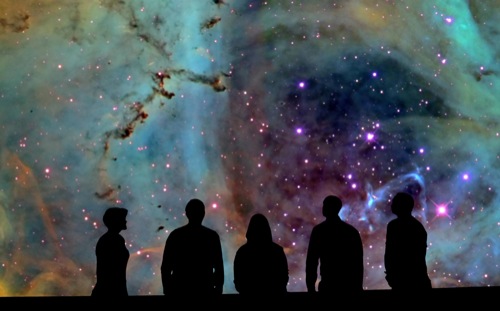
Courtesy Adler Planetarium
CHICAGO – Adler planetarium debuted its newest show, “Welcome to the Universe,” in May, giving visitors a billion-light-year trip through space.
The presentation uses high-tech images to simulate travel through outer space, orbiting the moon, zooming into a canyon on Mars, and soaring through the cosmic web, where a million galaxies shower down on them. Then it’s back to Earth, traveling faster than the speed of light.
“Welcome to the Universe” was created utilizing real telescopic data and scientific imagery. The Grainger Sky Theater offers the largest single, seamless digital image in the world with an ultra high-definition screen resolution of more than 8,000 x 8,000 pixels. The on-screen visuals expand beyond the traditional 180-degree dome and surround the visitor, creating an immersive space experience.
“This new adventure gives us the opportunity to showcase what our state-of-the-art theater can do,” said Adler president Paul Knappenberger Jr. “The Grainger Sky Theater is not just a theater, it is a space simulation environment that has the ability to view the universe from any time, place or distance.”
“Welcome to the Universe” begins with a survey of the night sky, zooming out into space to observe the surface of the dynamic planet Earth.
Along the way, there are stops at familiar exploration milestones – from the International Space Station, where humans continue to explore and monitor the Earth; to the moon, the farthest place humans have traveled; to Mars, the current focus of robotic exploration. Telescopes enable scientists to see billions of light-years away, and new visualizations based on the Sloan Digital Sky Survey — the largest map of the universe — allows the audience to see the newest, most accurate and realistic positioning of galaxies that exist as they travel deeper and deeper into space.
The journey continues through the Pleiades and M3 star clusters on the way out of the galaxy. The Milky Way occupies the full screen and then fades away into the distance. There is a pause before a million galaxies shower down on the audience as they travel a billion light-years back to Earth, moving faster than the speed of light.
“Welcome to the Universe” will run daily through May 3, 2013.
www.adlerplanetarium.org









